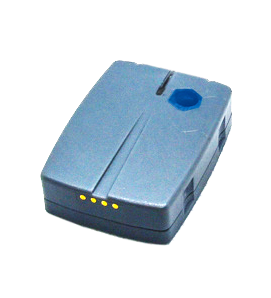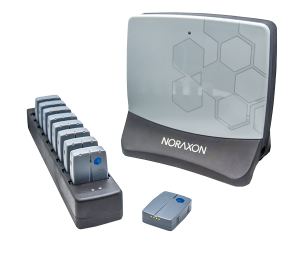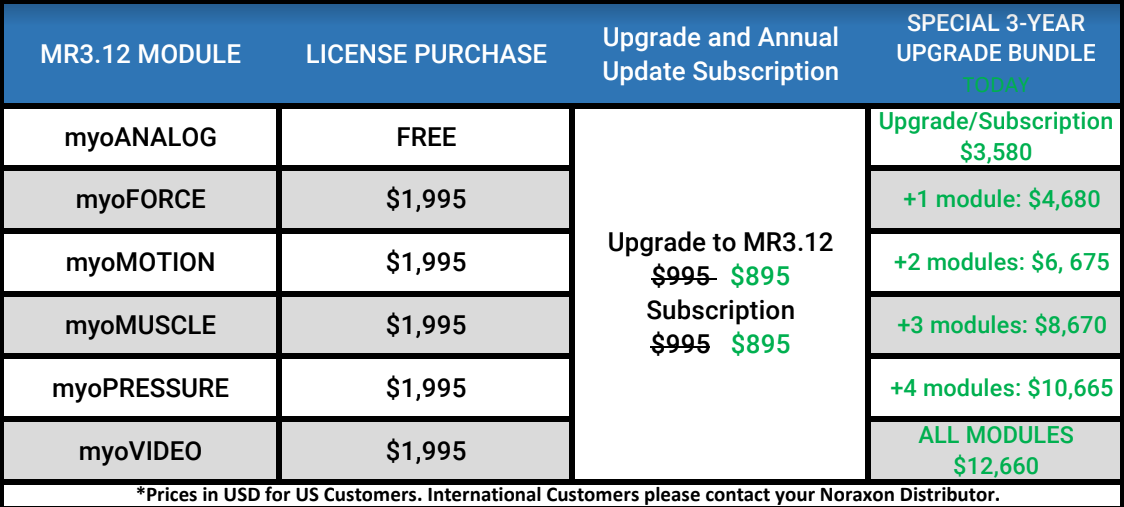
About IMUs
What are Inertial Measurement Units
An IMU is a Micro-Electro-Mechanical System (MEMS) typically comprised of 3 accelerometers and 3 gyroscopes. The more advanced systems also include 3 magnetometers. These tri-axial sensors are typically referred to as “3 Degrees of Freedom” (3 DoF) IMU sensors. 3 DoF means the sensors give only orientation (or tilt) data in 3 axes. The more advanced IMUs, such as Noraxon’s Ultium Motion, are capable of 6 DoF; these systems also provide translation or movement data indicating where the sensor is located in free space.
Noraxon uses an array of inertial measurement units (IMUs) to measure anatomical joint angles, orientation angles, and linear acceleration in natural and lab-based environments. Data and subject motion are displayed in real-time with graphs and a skeletal avatar. Users can generate customized reports or access quaternions and raw sensor data (accelerometer, gyroscopes, & magnetometers) as well as synchronize with EMG, pressure, force, video and third party devices within the myoRESEARCH software platform.
When are IMUs the right choice for motion capture?
REAL TIME VISUALIZATION:
→ Inertial motion tracking systems offer real-time motion tracking visualization and requires little to no post-processing.
USE IN ANY ENVIRONMENT:
→ Inertial sensors can be used anywhere, inside or outside and with no restrictions on capture volume.
GUARANTEED DATA CAPTURE:
→ Inertial sensors do not suffer from any line-of-sight occlusions or data dropouts.
HIGH SAMPLING RATES:
→ IMU sensors have very high internal sampling rates, typically at least 800 Hz.
DIRECT MEASUREMENT:
→ Inertial sensors directly measure linear accelerations and angular rate changes without the need for differentiating positional data. This allows for the direct estimation of force data.
What are some of the drawbacks of IMUs?
DRIFT:
→ Inertial sensors usually have some level of positional drift over time due to the nature of the technology which can be susceptible to magnetic interferences and accumulated gyroscope errors. Noraxon has implemented robust stabilization and correction algorithms to alleviate potential sensor and environmental issues.
POSITIONAL DATA:
→ Positional data is typically not as accurate as either optical or magnetic tracking systems due to the mathmetical estimation process required.
GLOBAL POSITIONING:
→ Global position data is not provided and must be calculated using either additional GPS sensors or with more advance systems that have a very accurate magnetometer combined with advanced Kalman filtering routines.
FIXED CALIBRATION:
→ Inertial sensor systems need initial conditions to be set in order to capture kinematic variables. This requires a subject to assume a static position that meets the ideal modelling conditions. Oftentimes this can be a challenge, especially for clinical populations who are unable to position their body in the required pose. Noraxon exclusively offers a Calibration Adjustment Tool to adjust or correct the static calibration performed with the IMU system by allowing users to directly measure a subject’s posture and apply that posture (and bone lengths) to the myoMOTION skeleton, thereby achieving ISB-compliant modelling with an inertial motion capture system.
Suggested Hardware
Ultium Motion, Noraxon’s next-generation inertial motion capture system, is equipped with a state-of-the-art sensor design that delivers accurate & reliable kinematic measurement for all types of movement.


